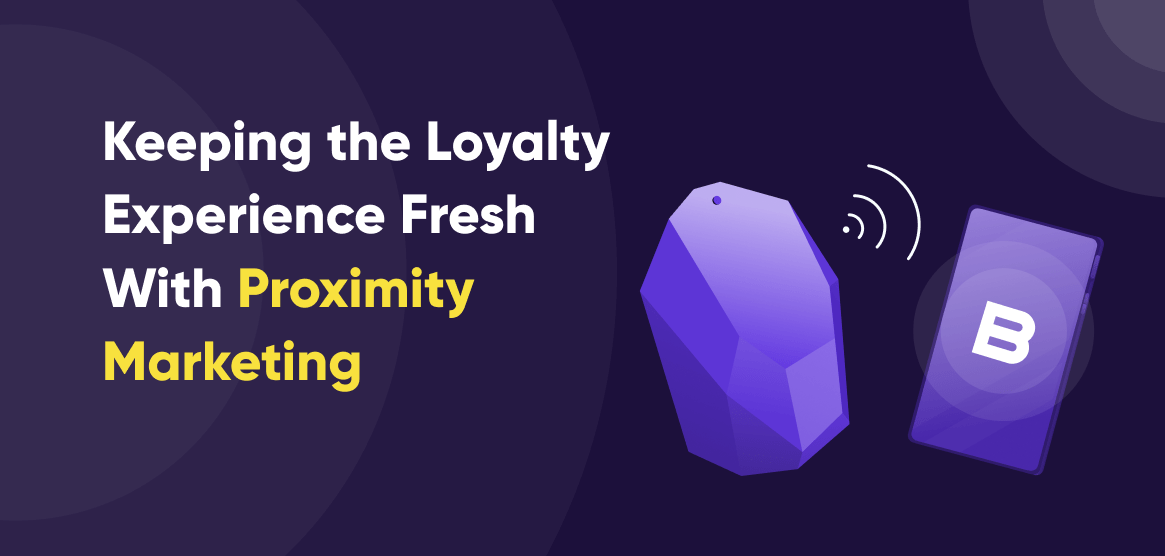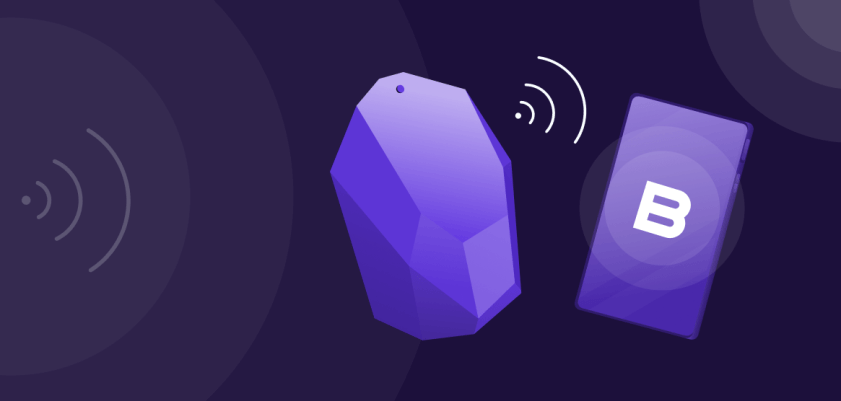Every business today is competing for customer trust and loyalty. Sadly, gone are the days when all you had to do was discounts and vouchers, and your customers would stick with you for life. Now you need to do more. Data from Salesforce shows that 91% of consumers are more likely to make a purchase after a positive experience, and 71% have made a purchase based on experience quality. When it comes to staying relevant and fulfilling customer expectations, customer loyalty programs are a helpful tool for businesses. Here’s where proximity marketing can help by enhancing the loyalty concept even further.
What is Proximity Marketing?
Proximity marketing is a hyperlocal marketing technique that includes localized wireless distribution of promotional content in a particular geographical area. Beacons—the prime tools for proximity marketing—are Bluetooth-enabled hardware devices that transmit signals to mobile phones, tablets, and other electronic devices nearby. You can also use other local technologies like Wi-Fi and QR codes to streamline your proximity marketing efforts.
There are many other ways in which proximity marketing can help your business. These include:
- Seamless geotargeting
- Increase app engagement and retention
- Get immediate conversions
- Deliver a personalized experience
- Gain a competitive edge
How Can Proximity Marketing Enhance Your Loyalty Program?
Now, let’s discuss how proximity marketing can improve your loyalty program with data enrichment and better targeting.
Laser-Focused Targeting
A major benefit of proximity marketing is that it allows you to precisely target your potential customers. Since it works in a defined geographical area, you can target potential customers when they’re close to your store. This narrows down your marketing campaign and makes it more targeted. You’ll be sending contextualized communications to those nearby instead of sending emails and messages to thousands of consumers who aren’t in a position to take action.
Location-based technologies allow you to personalize communications. Let’s say you’re a retail store owner, and you offer loyalty programs through your mobile app. If customers who have signed up for the loyalty program walk by your store, you can send them tailored discounts and offers. This helps you leverage impulse buying and generate instant sales.
Improve Customer Experience
Customer experience is one of the cornerstones of a successful loyalty program. A customer loyalty program that doesn’t provide a seamless customer experience will receive negligible engagement. If you want to boost in-store customer experience and engagement, QR codes can help.
You can use a QR code generator to create a coupon QR code and link it to a discount for your loyalty program members. Put up the code inside your store and ask your loyalty program members to scan the code using your business’ mobile application to receive an instant discount.
Businesses can use QR codes in numerous other ways. You can link the code to the loyalty program page on your website. In-store customers will be able to scan the code, visit your website, and register for your loyalty program immediately. This results in improved customer engagement and experience.
In-Depth Customer Data
In this data-driven landscape, the more information you have about your customers, the more you can streamline your marketing efforts. Geolocation marketing allows you to get critical insights into your customers, helping you better understand their behavior and decision-making process. With this data on hand, you can deliver a more personalized experience to your loyalty program members.
You can also expand your knowledge about your customers’ behavior and habits. Using beacons, you can determine how often customers visit a location and for how long they stay there. Based on this information, you can promote your loyalty program and highlight its unique benefits in a way that they’ll appreciate.
Marriott International, a global hotel chain, has integrated beacons into its loyalty programs to enhance customer experience. The hotel has deployed beacons in various areas in their hotels. The beacons transmit in-hotel discounts and offer to loyalty program members via the hotel app.
Deliver Time-Sensitive Offers
Lastly, you can use beacon-based proximity marketing to deliver time-sensitive offers to your loyal members. Suppose you have a spa & salon business and you’re running a time-limited discount or offer. You can use proximity marketing to send promotional messages to nearby members highlighting the discount and benefits.
Since proximity marketing is highly precise, the chances of consumers overlooking the notifications (wasted impressions) are low. Secondly, it enables you to tap into valuable customer insights, which you can use to deliver personalized deals and offers later in time.
Proximity Marketing in Action
The usage of proximity marketing has surged dramatically over the years. From retail to travel, all industries have discovered ways to leverage proximity marketing to boost customer engagement and drive business growth.
Let’s look at two popular examples of proximity marketing in action.
Carrefour
Carrefour is a multinational retailer with over 7,000 stores worldwide. They installed beacons in 28 of their stores in Romania. People who had the Carrefour mobile app received welcome messages upon arrival, along with product recommendations and mobile coupons. This enables Carrefour to provide a seamless customer experience and their app engagement skyrocketed by 400%.
Sephora
Sephora, a leading luxury beauty brand, introduced in-store beacons to create interactive digital experiences for their customers. Customers who have the Sephora To Go app can get special offers and loyalty program updates to customers. When customers walk inside the store and open the app, they get the store map along with daily offers.
Final Thoughts
Starting a loyalty program is one step towards customer retention and long-time brand love. But you need to ensure that your customers participate in your loyalty program and remain engaged. The strategic implementation of location-based marketing techniques and technology like beacons, QR codes, and more can help you promote your loyalty program and boost the customer experience.
If you wish to learn more about the immense capabilities of 21st-century loyalty programs, or how Antavo’s robust, API-driven technology can help you achieve your KPIs, feel free to book a demo, or invite us to your RFP.
In the meantime, start working on other aspects of your loyalty program’s blueprint with this handy worksheet.

